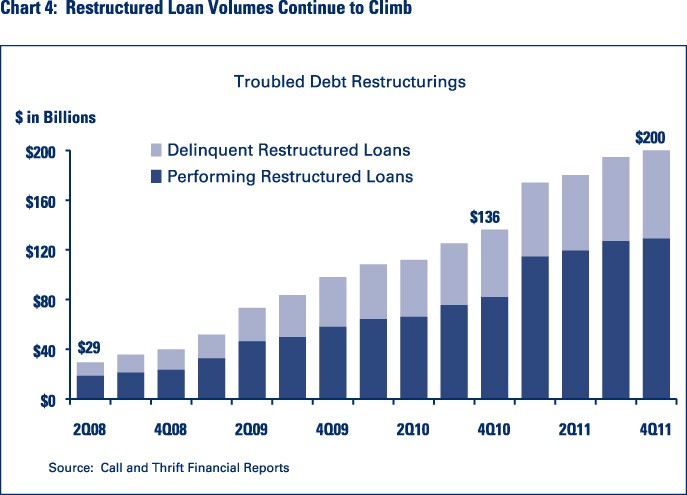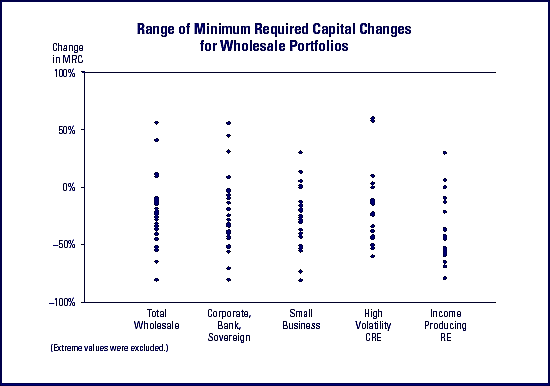FDIC Supervisory Insights Accounting News
Post on: 16 Март, 2015 No Comment

Supervisory Insights
Accounting News: Other-Than-Temporary Impairment of Investment Securities
This regular feature focuses on topics of critical importance to the bank accounting function. Comments on this column and suggestions for future columns can be e-mailed to supervisoryjournal@fdic.gov .
During the past year and a half, the longstanding accounting concept of other-than-temporary impairment of investment securities has drawn renewed attention because of actions by the Financial Accounting Standards Board (FASB ) and its Emerging Issues Task Force (EITF ). In addition, the federal banking agencies issued a revised Uniform Agreement on the Classification of Assets and Appraisal of Securities Held by Banks and Thrifts in June 2004 that incorporated this concept into the Agreement’s general debt security classification guidelines. In light of these developments, examiners and bankers should understand the currently applicable accounting guidance on impairment and its relationship to the evaluation of securities portfolios during examinations.
Impairment of Securities
From an accounting standpoint, an impairment of a debt or equity security occurs when the fair value of the security is less than its amortized cost basis, i.e. whenever a security has an unrealized loss. In this situation, examiners often refer to the security as being depreciated or under water.
The subject of impairment of securities and the need for an institution to consider its accounting consequences for purposes of reporting in accordance with generally accepted accounting principles (GAAP) dates back more than 50 years. 1 The current source of authoritative guidance on accounting for investment securities, FASB Statement No. 115. Accounting for Certain Investments in Debt and Equity Securities. as amended (FAS 115), was originally issued in 1993. FAS 115 is perhaps best known for requiring investment securities to be categorized into three categories: held-to-maturity, trading, and available-for-sale. However, it also requires that an institution determine whether a decline in fair value below amortized cost for an individual available-for-sale or held-to-maturity security is other than temporary. If the impairment is judged to be other than temporary, the cost basis of the individual security must be written down to fair value, thereby establishing a new cost basis for the security, and the amount of the write-down must be included in earnings as a realized loss. 2 , 3 FAS 115 further provides that after such a write-down, the new cost basis shall not be changed for subsequent recoveries in fair value. A recovery in fair value, both for an available-for-sale security and a held-to-maturity security, should not be recognized in earnings until the security is sold. 4
As currently defined under GAAP, the fair value of an asset is the amount at which that asset could be bought or sold in a current transaction between willing parties, that is, other than in a forced or liquidation sale. Quoted market prices in active markets are the best evidence of fair value and must be used as the basis for the measurement, if available.5
Guidance on Evaluating Impairment in FAS 115
FAS 115 provides only one explicit example of other-than-temporary impairment. Using language that parallels the definition of impairment for a loan in FASB Statement No. 114, Accounting by Creditors for Impairment of a Loan. FAS 115 states that if it is probable that an institution will be unable to collect all amounts due according to the contractual terms of a debt security not impaired at acquisition, an other-than-temporary impairment shall be considered to have occurred. However, FAS 115 also refers to two other sources of literature that should be considered in evaluating impairment:
- Securities and Exchange Commission (SEC) Staff Accounting Bulletin (SAB) No. 59, which has been codified as SAB Topic 5.M, Other Than Temporary Impairment of Certain Investments in Debt and Equity Securities (SAB 59 ); and
- American Institute of Certified Public Accountants (AICPA) Statement on Auditing Standards No. 92, Auditing Derivative Instruments, Hedging Activities, and Investments in Securities (SAS 92 ).

The impairment guidance in SAB 59 and SAS 92 is discussed below.
Recognizing that FAS 115 provided limited guidance on evaluating impairment, the FASB staff addressed this subject in November 1995 in a FAS 115 implementation guide. 6 In the response to Question 46 of the guide, the FASB staff advised that
recognition of other-than-temporary impairment also may be required if the decline in a security’s value is due to an increase in market interest rates or a change in foreign exchange rates since acquisition. Examples of when a decline in the fair value of a debt security may be other than temporary include situations where the security will be disposed of before it matures or the investment is not realizable.
The FASB staff’s response to the next question in the guide deals with the disposal of a security prior to maturity, referencing EITF Topic No. D-44. Recognition of Other-Than-Temporary Impairment upon the Planned Sale of a Security whose Cost Exceeds Fair Value. The EITF had discussed this issue earlier in 1995 after the FASB staff had been asked about the accounting treatment for a specifically identified available-for-sale debt security that an institution intends to sell at a loss shortly after the balance sheet date. The FASB staff indicated that, in this situation, if the institution does not expect the fair value of the security to recover prior to the expected time of sale, a write-down for other-than-temporary impairment should be recognized in earnings in the period in which the decision to sell is made.
The EITF Considers Impairment
Despite the various sources of guidance on impairment of securities, accountants and others expressed concern in 2002 that the accounting literature discussing the concept of other-than-temporary impairment was ambiguous and had led to inconsistent application of this literature. Late that year, the FASB’s EITF decided to pursue the development of additional guidance for determining whether certain investments in securities, including held-to-maturity and available-for-sale securities, have incurred an other-than-temporary impairment. In EITF Issue No. 03-1, The Meaning of Other-Than-Temporary Impairment and Its Application to Certain Investments (EITF 03-1 ), the EITF first reached a consensus that certain disclosures about securities with impairment should be included in the footnotes to financial statements prepared in accordance with GAAP. Ratified by the FASB Board in November 2003, these new disclosures were first required in annual financial statements as of year-end 2003.
The disclosures required by EITF 03-1 provide quantitative and qualitative information about all held-to-maturity and available-for-sale securities in an unrealized loss position for which other-than-temporary impairments have not been recognized. For each date for which a balance sheet is presented in the financial statements, an institution must provide a table that shows, for each category of investment security, the aggregate amount of unrealized losses on securities with impairment and the aggregate fair value of these securities. Furthermore, these disclosures must be shown separately for securities that have been in a continuous unrealized loss position for less than 12 months and those that have been in a continuous unrealized loss position for 12 months or longer. An example of the format for these quantitative disclosures is shown below. The institution must also provide, in narrative form, sufficient information about the securities with impairment as of the most recent financial statement date to enable users to understand the quantitative disclosures. In addition, this narrative disclosure must describe the information the institution considered (both positive and negative) in reaching the conclusion that the impairments are not other than temporary.
In March 2004, the FASB Board ratified the accounting guidance for determining whether certain investment securities have incurred an other-than-temporary impairment on which the EITF had reached a consensus. EITF 03-1 established a three-step process for determining when an investment is impaired, whether that impairment is other than temporary, and how to measure the impairment loss if the impairment is deemed to be other than temporary. This process was to be applied to individual securities whose fair value had declined below amortized cost.
Investment Securities in an Unrealized Loss Position for Which Other-Than-Temporary Impairments Have Not Been Recognized 6














